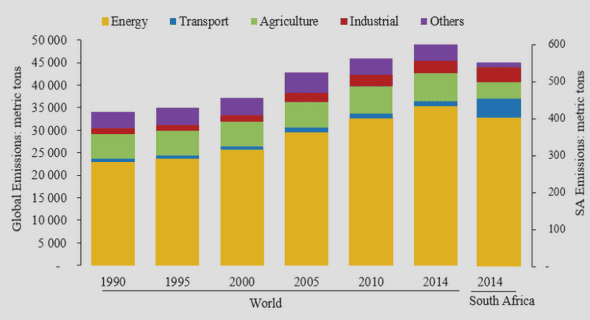(Downloads - 0)
For more info about our services contact : help@bestpfe.com
Table of contents
1 Introduction and Motivations
1.1 Introduction
1.2 Rechargeable Batteries
1.3 Electrolytes in Batteries: Fundamentals
1.4 Organic Solvents and Salts
1.4.1 Physical Properties of Ethylenecarbonate (EC), Dimethylcarbonate (DMC), Propylenecarbonate(PC)
1.5 Mixtures of Organic Solvents
1.5.1 EC,PC,DMC + LiClO4
1.5.2 EC, PC, DMC + LiBF4
1.5.3 EC, PC, DCM + LiTFSI
1.5.4 EC, PC, DMC + LiPF6
1.6 Motivation and Overview
2 Numerical Techniques
2.1 Density Functional Theory
2.1.1 Outline of Electronic Structure Calculations
2.1.2 Schr¨odinger Equation
2.1.3 The Born-Oppenheimer (BO) Approximation
2.1.4 Hartree-Fock Theory
2.1.5 Thomas-Fermi Theory
2.1.6 Density Functional Theory (DFT)
2.1.6.1 Hohenberg and Kohn Theorems
2.1.6.2 The Kohn-Sham Formulation
2.1.6.3 Exchange-Correlation Functional
Local-Density Approximation (LDA)
Generalised-Gradient Approximation (GGA)
2.1.7 Basis Sets
2.1.8 Amsterdam Density Functional (ADF)
2.1.8.1 Formalism
2.1.8.2 Solvent Effects: Conductor-like Screening Model (COSMO)
2.2 Molecular Dynamics Simulations
2.2.1 Algorithm for integration of equation of motion
Quaternions method
2.2.2 Ensembles
Nos´e -Hoover Thermostat
Parrinello-Rahman Barostat
3 Study of Lithium ion Coordination with Carbonate Solvents
3.1 Ethylene carbonate(EC)
3.2 Propylene carbonate (PC)
3.3 Dimethyl Carbonate (DMC)
3.4 Li+(EC)1−6 complexes
3.4.1 Structural Properties
3.4.2 Frequency and Mulliken Charge Analysis
3.4.3 Frontier Molecular Orbital(FMO) analysis
3.5 Li+(DMC)1−5 complexes
3.5.1 Structural Properties
3.5.2 Frequency and Mulliken Charge Analysis
3.5.3 Frontier Molecular Orbital(FMO) analysis
3.6 Li+(PC)1−5 complexes
3.6.1 Structural Properties
3.6.2 Frequency and Mulliken Charge Analysis
3.6.3 Frontier Molecular Orbital(FMO) analysis
3.7 Thermodynamic parameters of Li+(S)1−5 complexes: (S=EC,DMC and PC)
3.8 Solvent Mixtures
3.8.1 Binary Mixtures
3.8.2 Ternary Mixtures
3.9 Conclusions
4 Study of Counter Anion PF− 6 Effect on Li+-EC, -DMC and -PC complexes
4.1 Optimization of PF− 6 Anion
4.2 Possible interactions between Li+ and PF− 6 anion
4.3 Optimization of LiPF6
4.4 Effect of PF− 6 anion in Li+(EC)1−3 Complexes
4.5 Effect of PF− 6 anion in Li+(DMC)1−3 Complexes
4.6 Effect of PF− 6 anion in Li+(PC)1−3 Complexes
4.7 Stability of Clusters with anions
4.8 Conclusions
5 Coupling DFT and MD
5.1 What we need MD for?
5.2 Molecular Dynamics Simulation
5.2.1 Effective Force Fields for EC, PC and DMC
5.3 The Published Version of Our Paper in The Journal of Physical Chemistry C
6 Conclusions and Perspectives
7 Chapitre 1: Introduction et motivations
8 Chapitre 2: Techniques Num´eriques
9 Chapitre 3: Etude de Lithium ion Coordination avec Solvants des Carbonates
10 Chapitre 4: Etude de Contre-anion PF− 6 Effet sur Li+ -EC, -DMC et complexes -PC
11 Chapitre 5: Accouplement DFT et MD 16
12 Conclusions et Perspectives
Bibliography




